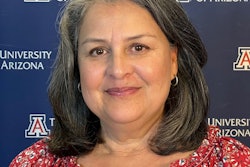In testimony March 10, 2010 before the House Science and Technology Subcommittee on Research and Science Education, National Science Foundation (NSF) Director Arden Bement advocated for the administration’s 8-percent increase in the NSF fiscal year 2011 budget to $7.42 billion. The words were earnest, but, for communities supported by the Education and Human Resources (EHR) Directorate, the increase smells of a skunk.
Overall, while the Research and Related Activities account would grow by 8.2 percent, Education and Human Resources would increase only by 2.2 percent. More troubling is a consolidation, under “Learning and Broadening Participation,” that “realigns and builds on existing programs” and would consolidate investments in three signature programs—Historically Black Colleges and Universities Undergraduates program (HBCU-UP), Louis Stokes Alliances for Minority Participation (LSAMP), and Tribal Colleges and Universities (TCUP)—housed in one division. The proposed Comprehensive Broadening Participation of Undergraduate Institutions in STEM (CBP-UI) would total $103.1 million, including an Hispanic-serving institutions component.
The rationale for this proposal is to “increase institutions’ competitiveness” through partnerships. Four of the targeted areas for increased competitiveness invoke familiar NSF rhetoric. The fifth refers to education efforts pursued through three long-standing NSF center programs, the only reference to investments outside of EHR.
The odor lingering in the air is this: Broadening participation does not rest primarily with one division within the education directorate of NSF. The impression left by one crisp paragraph in testimony that reiterates “investments across NSF” is acknowledgment of the magnitude of the problem—under participation by members of certain groups and institutions—but doesn’t deliver the resources to address it. Indeed, it sweeps four programmatic communities into one, simultaneously (though not mentioned in the testimony) reducing funding for both the gender and persons with disabilities programs in the same division soon to experience “consolidation.”
This is not how you broaden participation. Organizationally, the proposed consolidation sends the wrong message and reflects none of the thinking that may have prompted the change. Were the program portfolios analyzed to discern over- and under-achieving institutions? Were the efforts of the respective program communities (coalesced by NSF funding over many years), bolstered by project evaluations and evidence of effectiveness, consulted? Were alternative “fixes” entertained: why consolidate within one division in which the primary performer institutions are historically Black, Hispanic, and Tribal-serving? As Bement himself states, “An essential part of our mission is to constantly re-think old categories and traditional perspectives.” Does this not apply to NSF’s own directorate-division-program structure? Why not look across divisional lines within or beyond EHR? Why not try to leverage research directorate-based programs that in a few experimental years have begun to yield impressive dividends in multi-institutional “alliance” projects that boost STEM enrollments and degrees, like the Broadening Participation in Computing program rostered in the CISE Directorate?
What smells is the target for consolidation in EHR—precisely those institutions that feed students from underrepresented groups to research universities. NSF elsewhere in the portfolio is robustly funding partnerships in the research directorates to promote interactions between traditionally minority-serving institutions and research universities. The key word is “robustly.” Why not offer incentives to the latter to form alliances with the former? Then expect performance of all partners—or make all suffer in their subsequent proposals. (Bement’s statement also contains $1 million for “a centralized NSF capability for assessment and evaluation” to identify the most effective means for continuous improvement across the NSF portfolio.” This seems a little late to benefit the consolidated programs.)
Why not reconfigure and redesign programs to reward disciplinary and interdisciplinary communities alike to pursue NSF’s broadening participation mission? Instead, the administration proposal advanced by Bement appears arbitrary and ill-considered. It disenfranchises NSF program officers and undermines those communities at the core of broadening participation (who were intervening before it was fashionable). Budgets have consequences. What LSAMP, HBCU-UP, and TCUP have engendered in the faculty and students participating in these respective NSF-fueled communities—a sense of belonging, enhanced confidence and competence, and persistence in STEM careers—will, I predict, lose focus as well as funding. I fear a dilution of their efforts, of their visibility in the stratified higher education universe, and of their impact on students, faculty and institutions unlike their own.
So from the perspective of a former NSF division director and—full disclosure—a former or current grantee of some of the programs mentioned above, I wonder when all of NSF will be held accountable for developing the talent too long ignored or subordinated in the foundation’s research-driven portfolio. EHR deserves better—a more imaginative proposal, a more thoughtful explanation, a better story than that delivered by the NSF director in his testimony—and a more potent agency-wide investment in “broadening participation.”
Dr. Daryl E. Chubin is director of the Center for Advancing Science & Engineering Capacity at the American Association for the Advancement of Science. Chubin was formerly the Division Director for Research, Evaluation & Communication at the National Science Foundation from 1993 to 1999 and served as a Senior Policy Officer for the National Science Board from 2000 to 2001.















